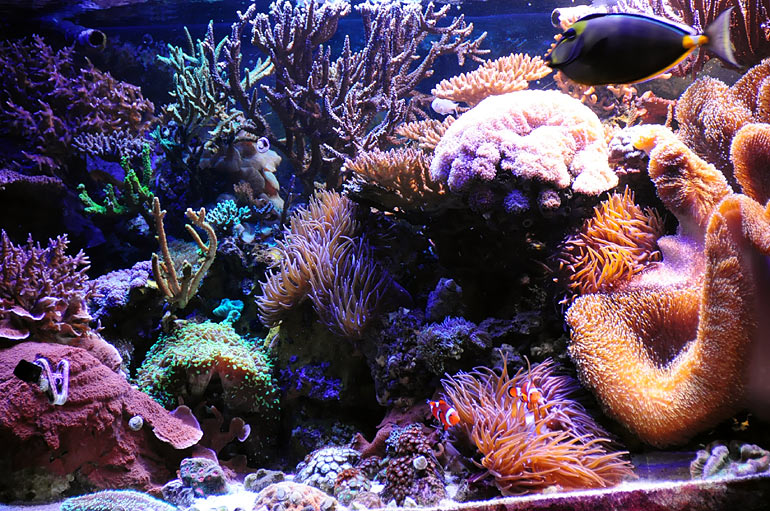by
Published on 07-19-2010 04:45 PM

This article contains multiple pages and over 200 images.
It’s the sound no one wants to hear. It’s the visual we pray will remain only a dream. It’s the fear we’ve often considered, all the while hoping to outwit this worst case scenario with every ploy conceivable.
Even with the most careful planning, time marches forward. Hour by hour, pressure stresses and tugs at the very seams that hold your reef tank together. Gravity is relentless, and age tears at the surfaces above and below the water, weakening the aquarium. Warranty or not, eventually something is going to give. What you do next dictates how this dance plays out.
I can’t help but wax poetically about the recent shift that my reef tank took. I put a lot of time, pride and money into making it the beautiful piece of the ocean it was, only to discover a seam failing. With the carpet gradually absorbing more and more water, my reef slowly began to “bleed” to death. The fish swam about unawares, just thinking about their next meal. The corals were growing quietly, swaying in the current, blissfully ignorant of the enormity of what was to come. And all the while, their caregiver was trying to determine the best option under the circumstances.
This is the story of the end of my 280g reef. It was going to turn six years old in 50 days, still well in its prime. Corals were thriving, intertwined and yet tolerating one another for the most part. Some were losing ground as their closest neighbor gained another inch or so. The water was sparkling, the parameters perfectly suited for their needs. Yet their home, the 37.5 cubic feet they shared, was letting go. Below, a bunny was cleaning himself, without knowledge of the impending rush of water that was likely to pour his way had I not noticed the wet area spreading nearby. Perhaps I should be grateful for the 2141 days that those seams held, instead of feeling the loss so strongly. Fortunately I was home when this happened. After all, I was scheduled to be in Austin that weekend.
On July 2nd, as I was heading out the front door of my home, I heard my shoe squeak slightly on the tile. We’d had a great deal of rain and I dismissed it, thinking my carpet was a little moist from recent foot traffic. On July 3rd, the squeak was far more pronounced, causing me to pause. Fighting back my dismay, I quickly studied the angled-front 20-gallon tank in the entry, but all was dry as was the tile beneath. I checked inside the adjacent closet to see if the plumbing was leaking, but it too was as it should be. Walking backwards slowly as I felt the carpet with my fingertips, I tracked the wetness back to the left column of the woodwork that wraps my 280-gallon
...


 But, hey why not make use of it for the next tank!?
But, hey why not make use of it for the next tank!?